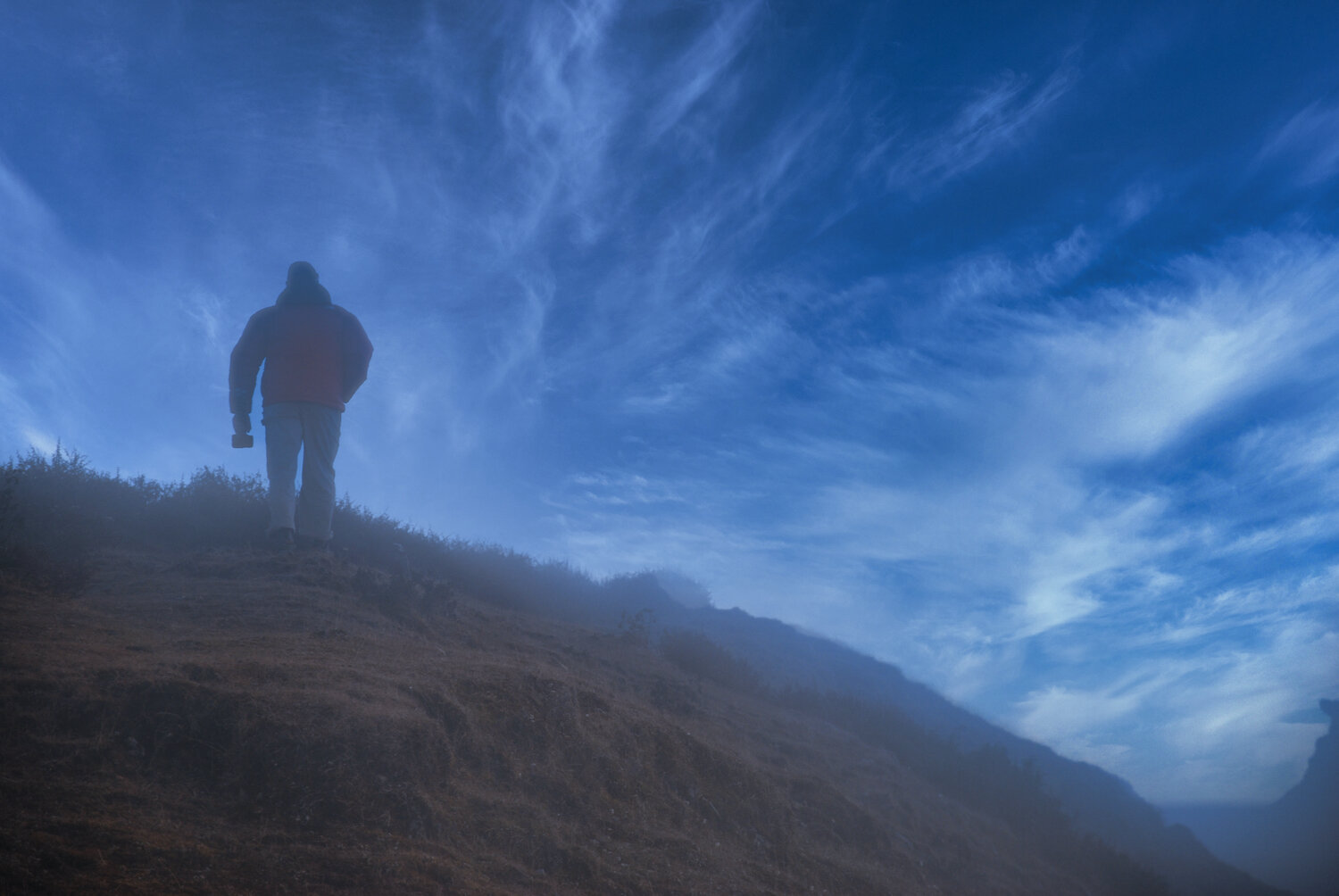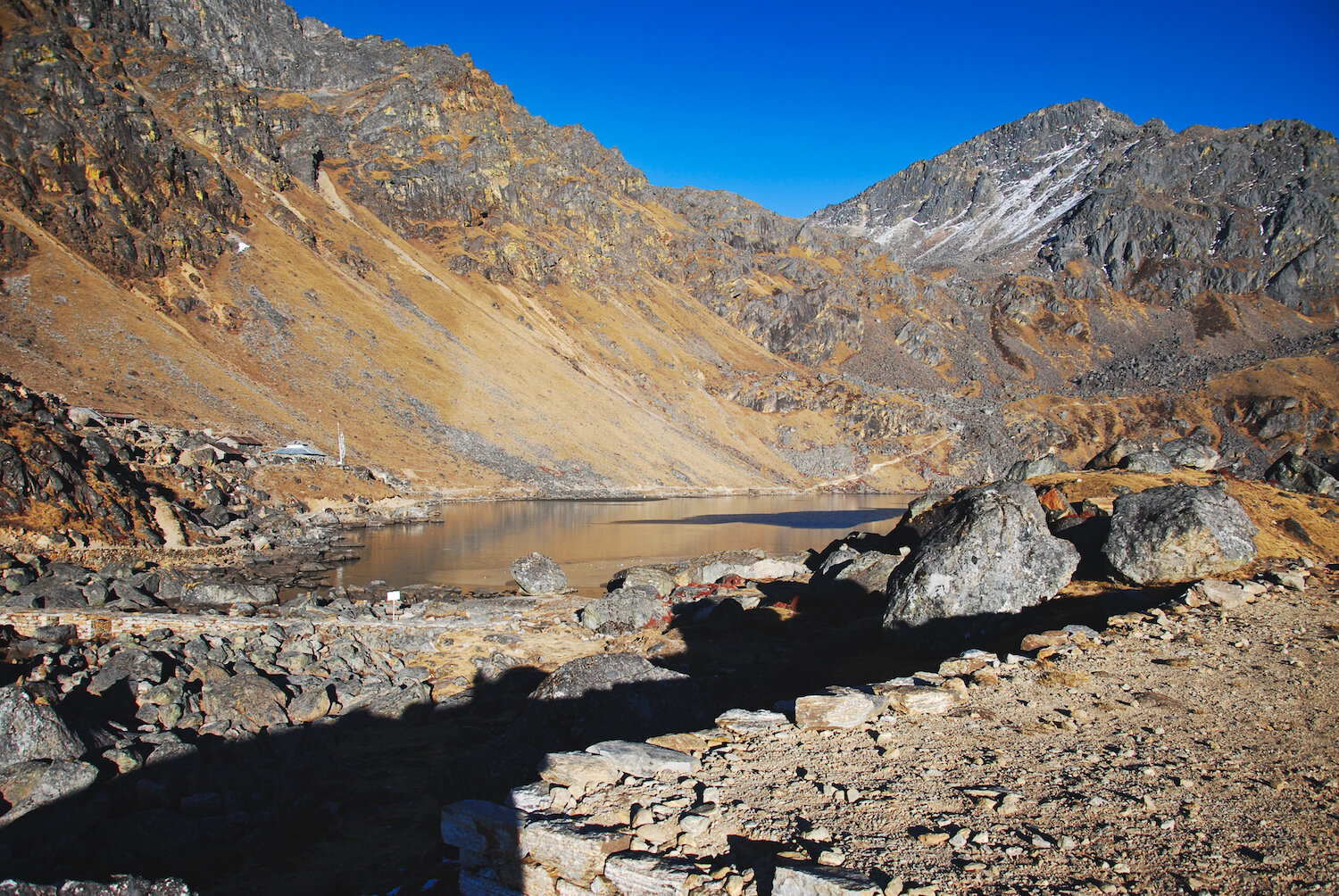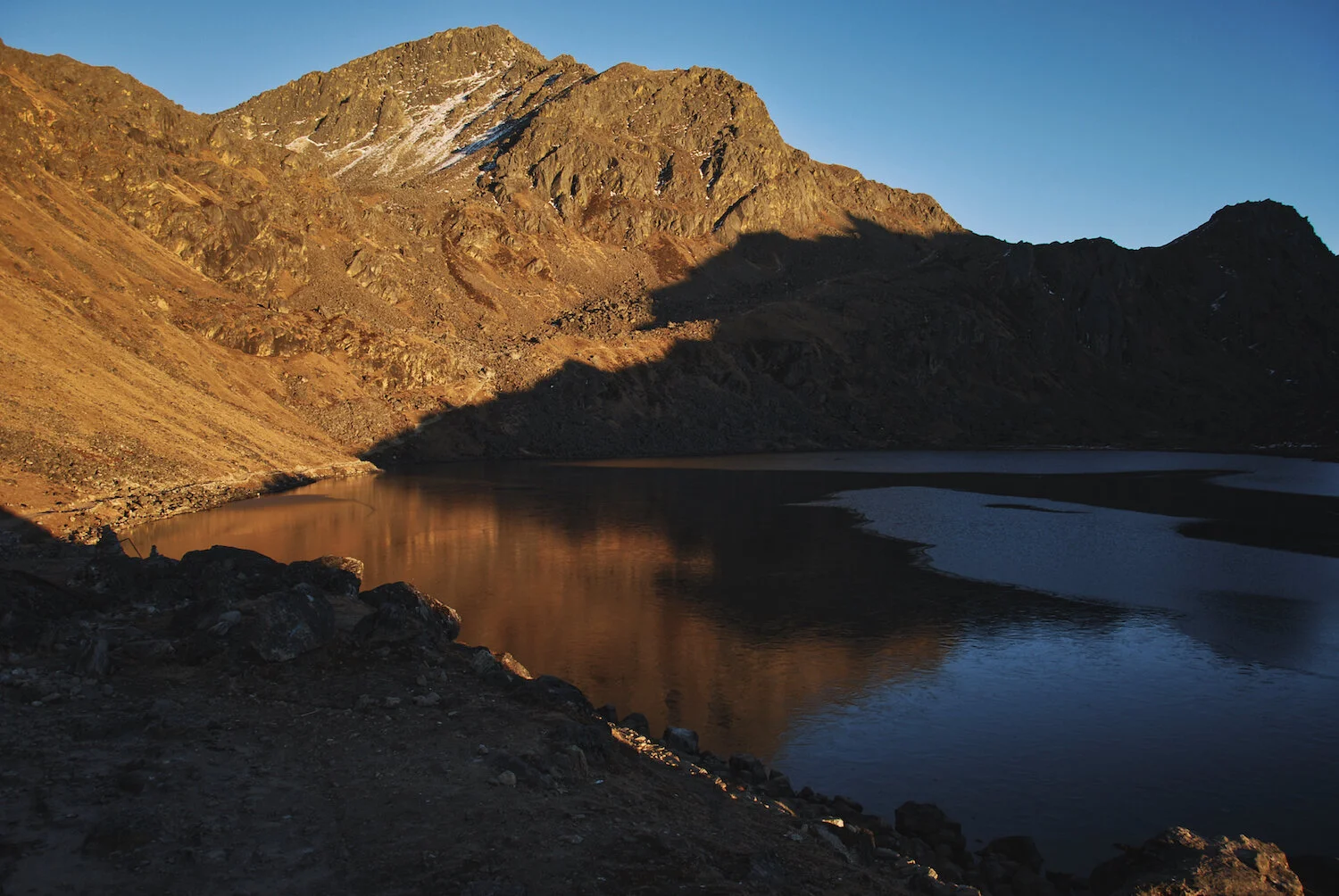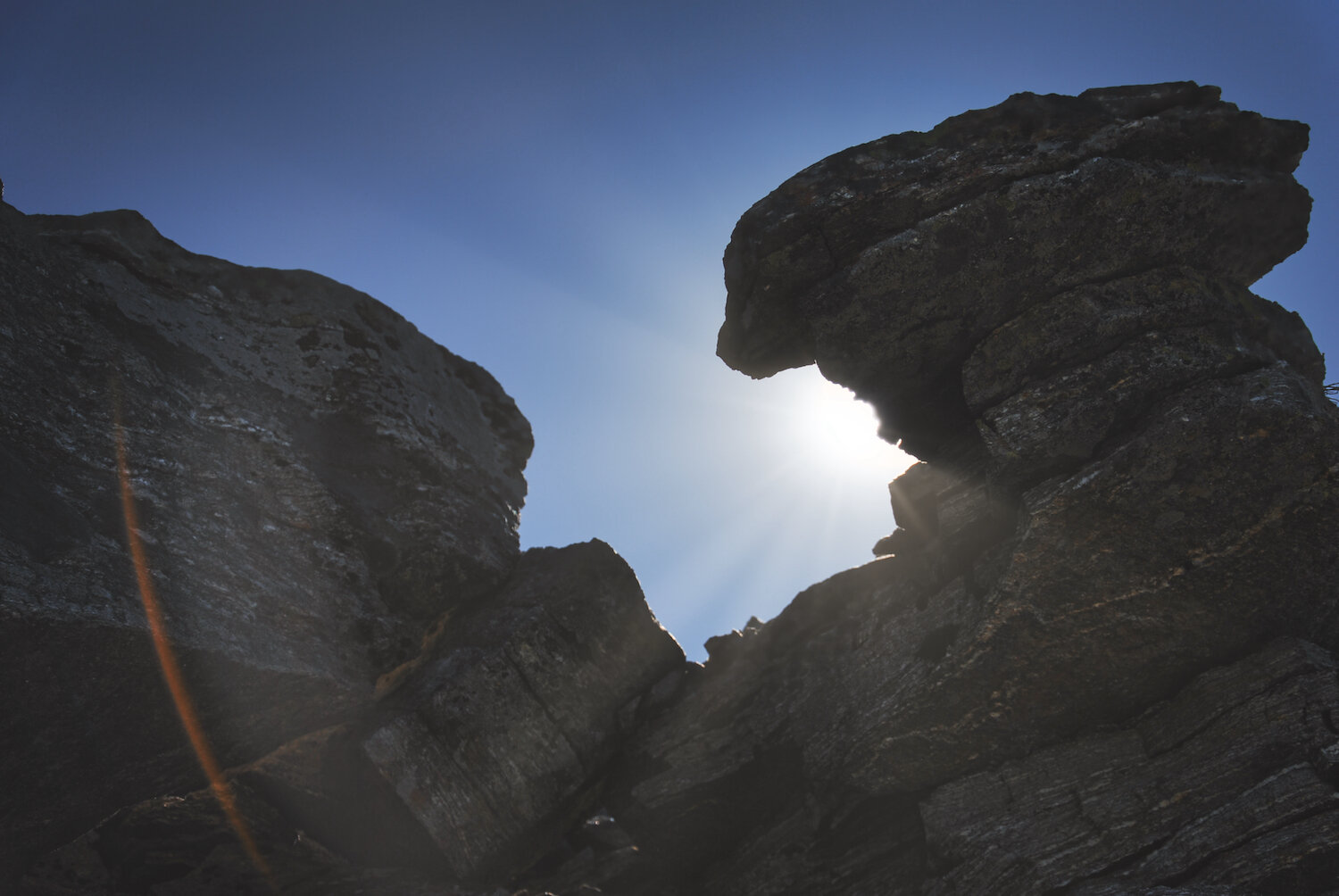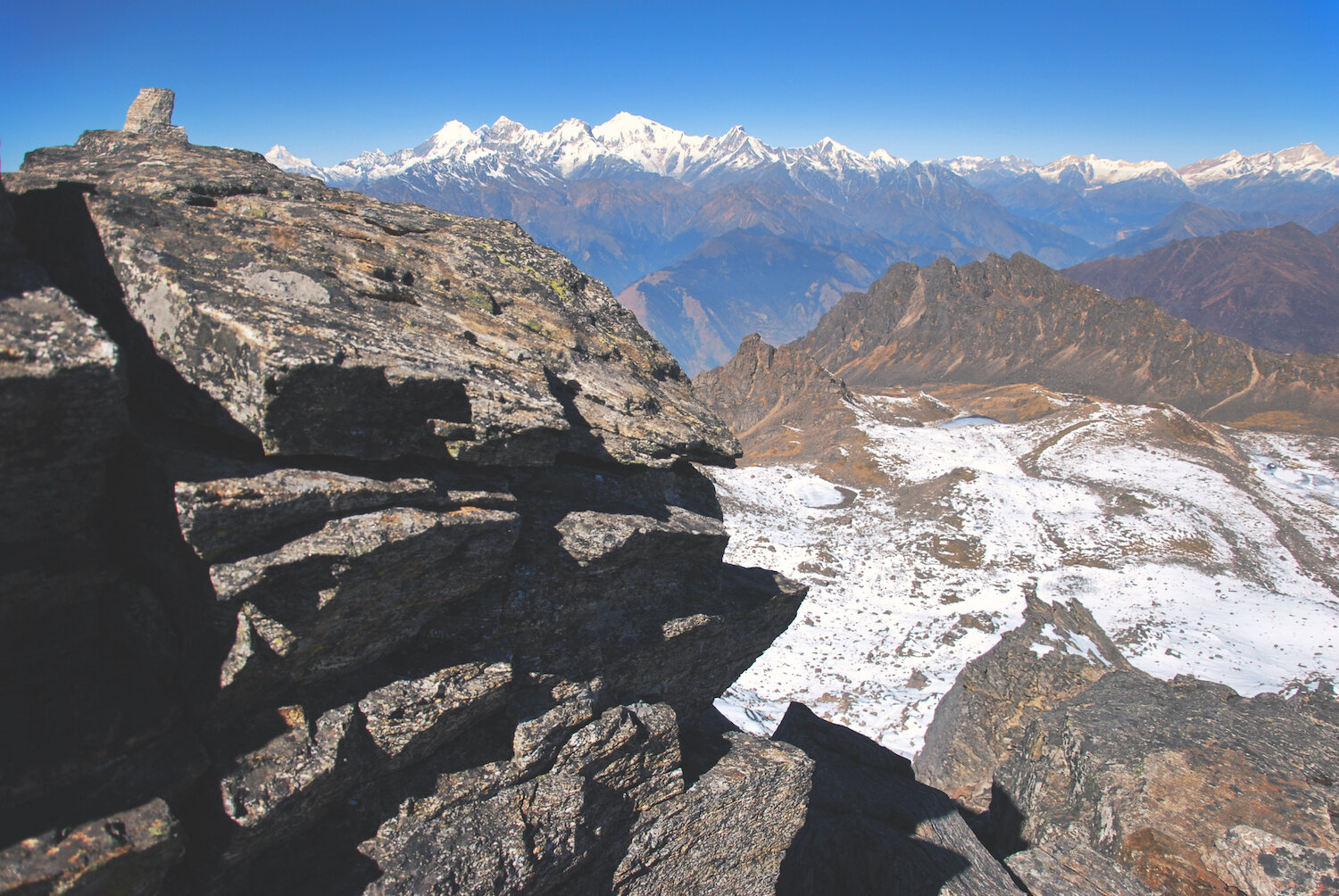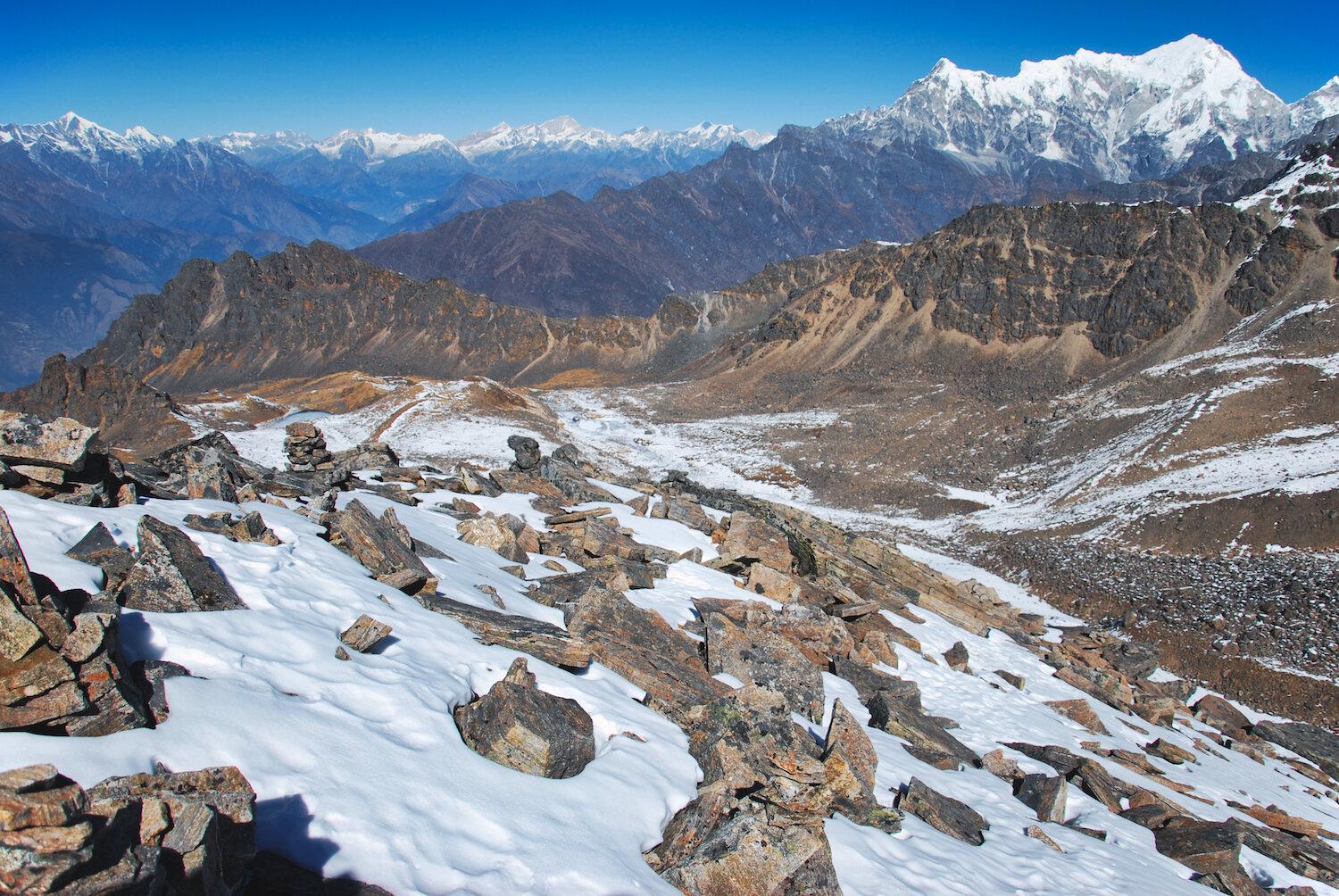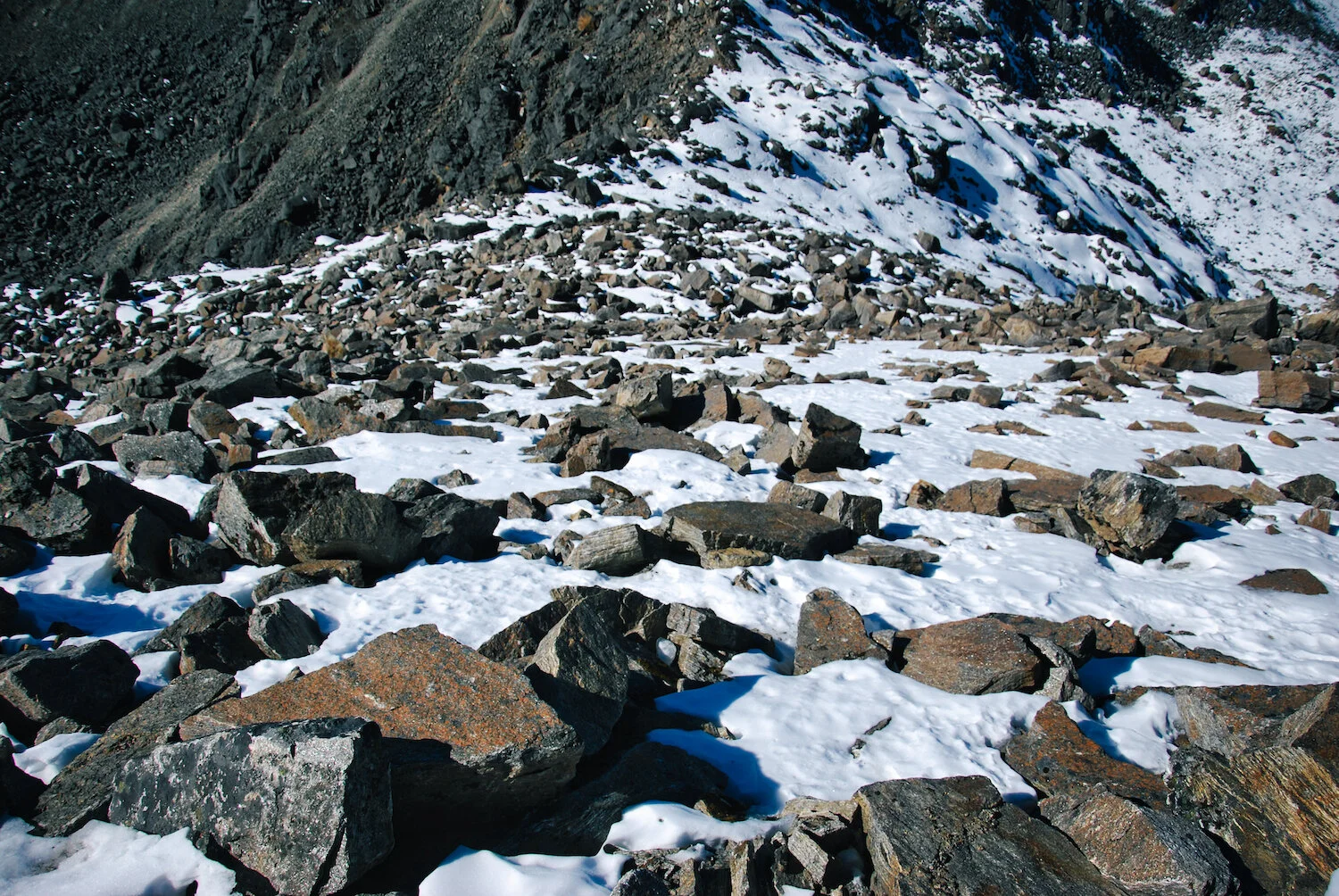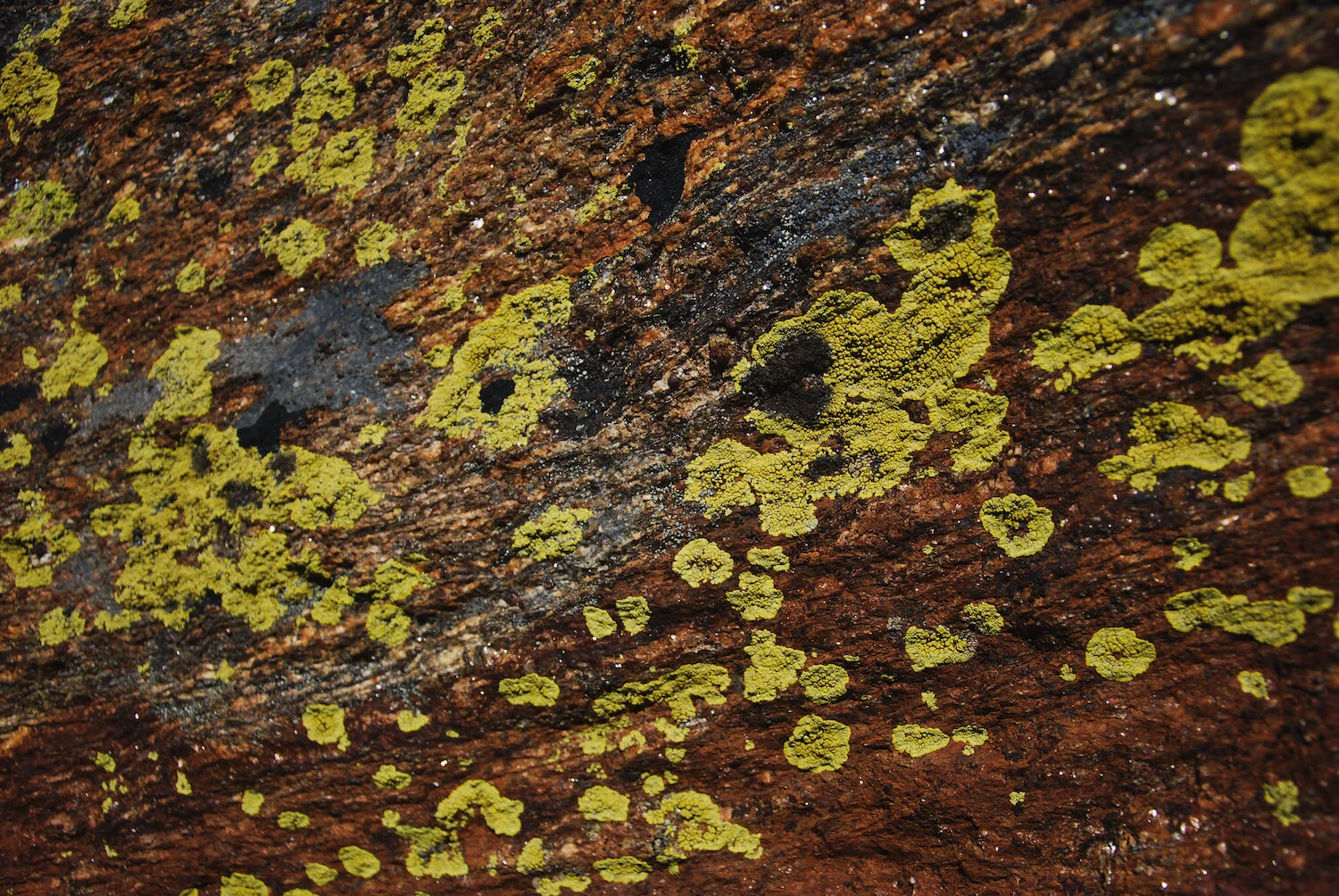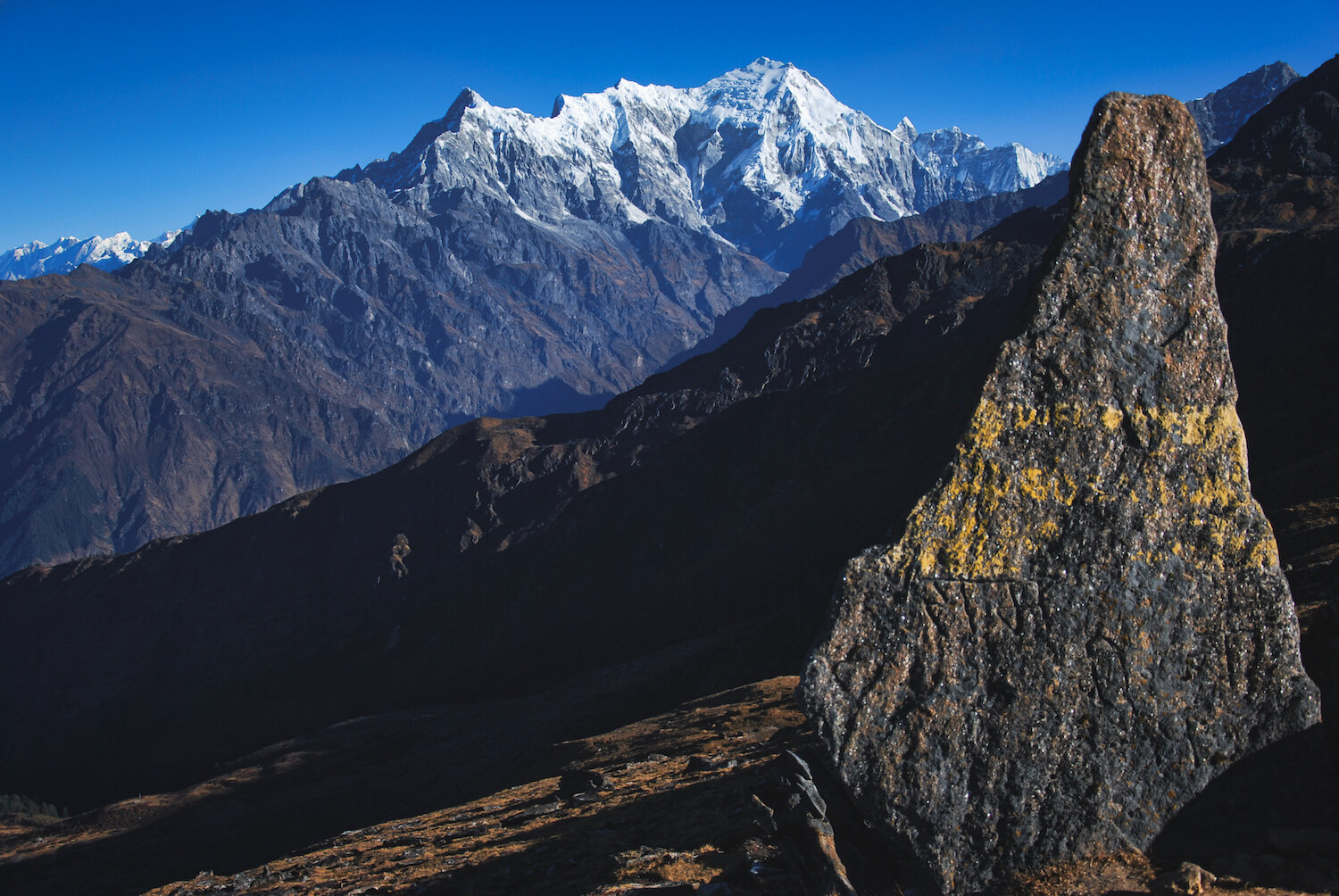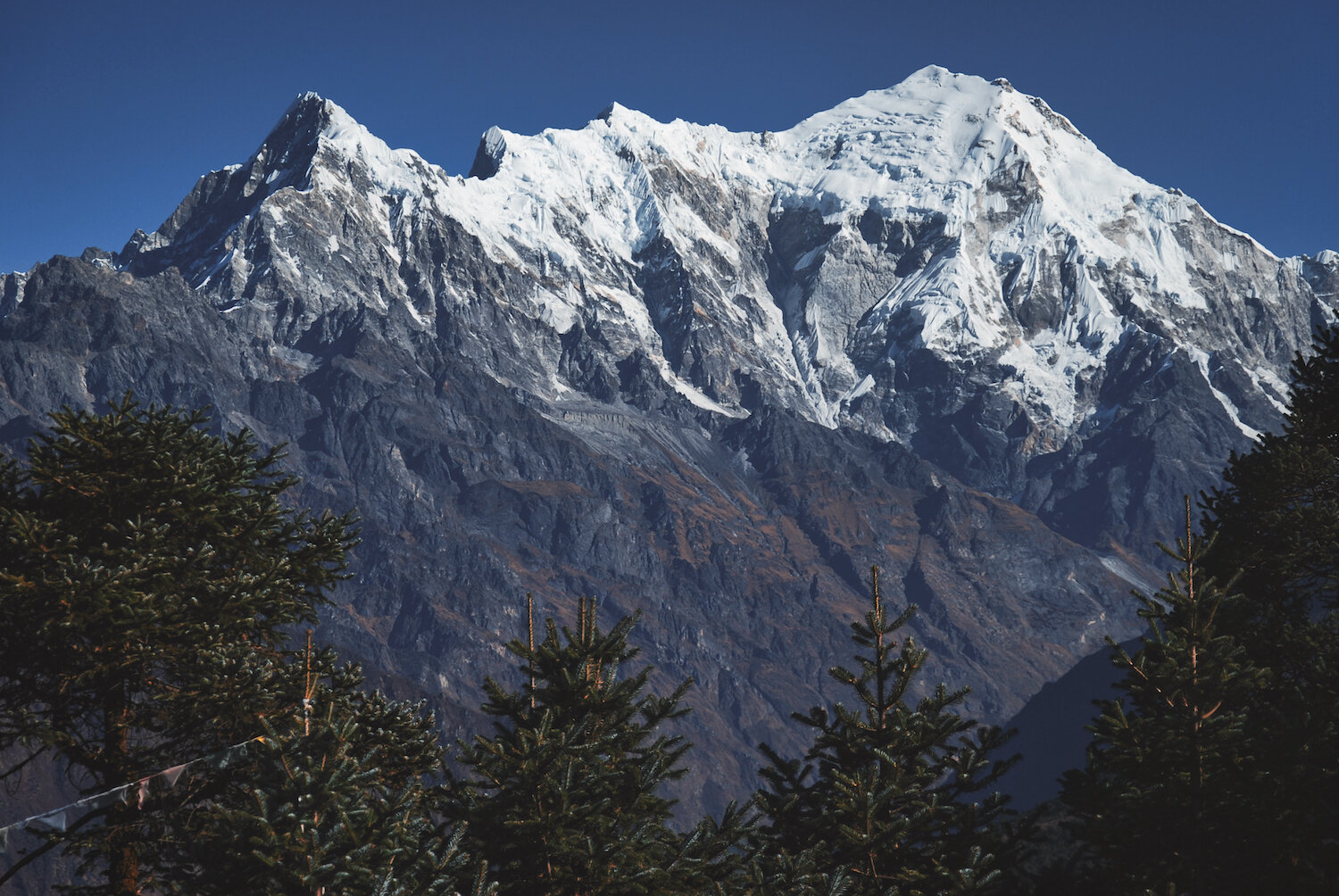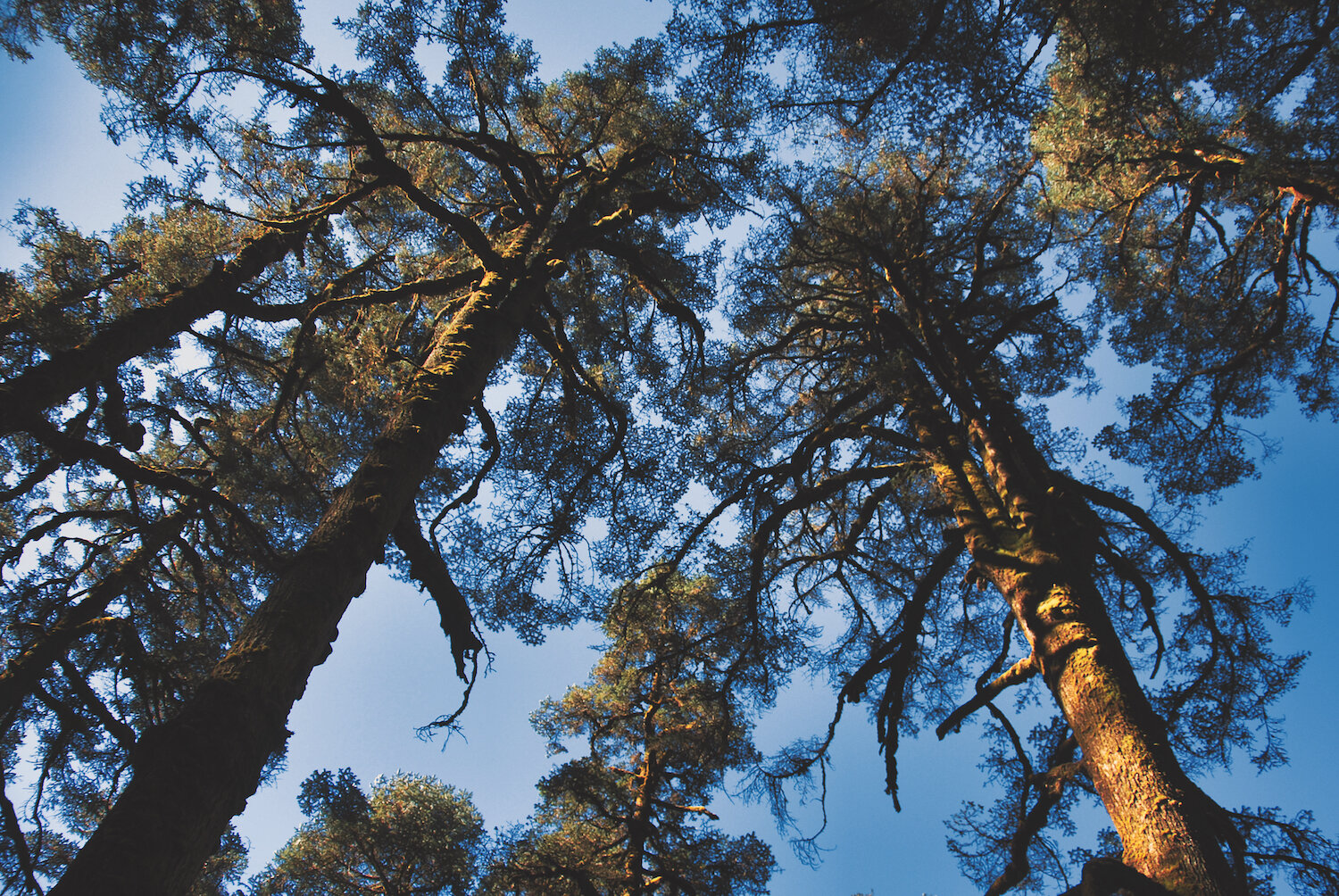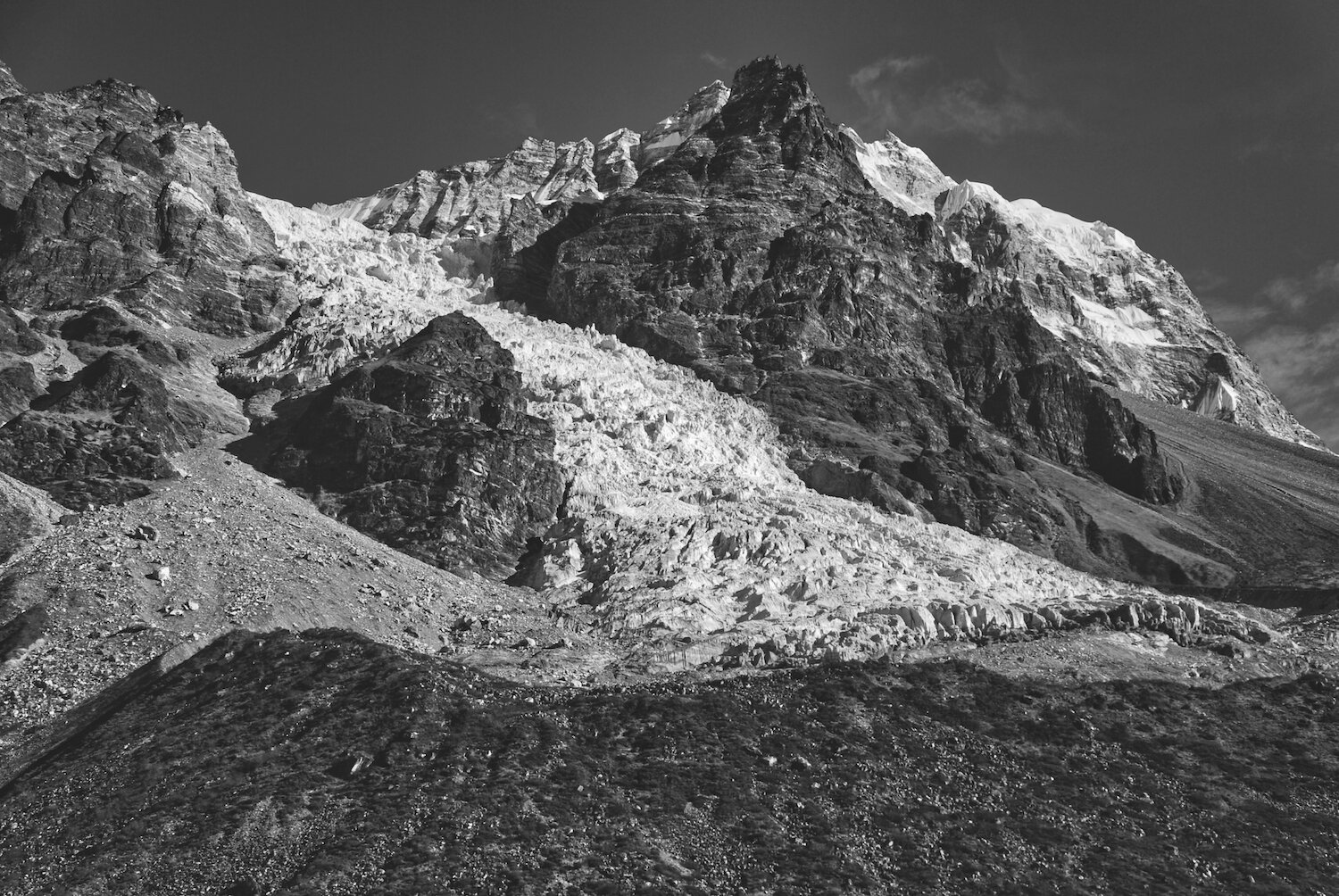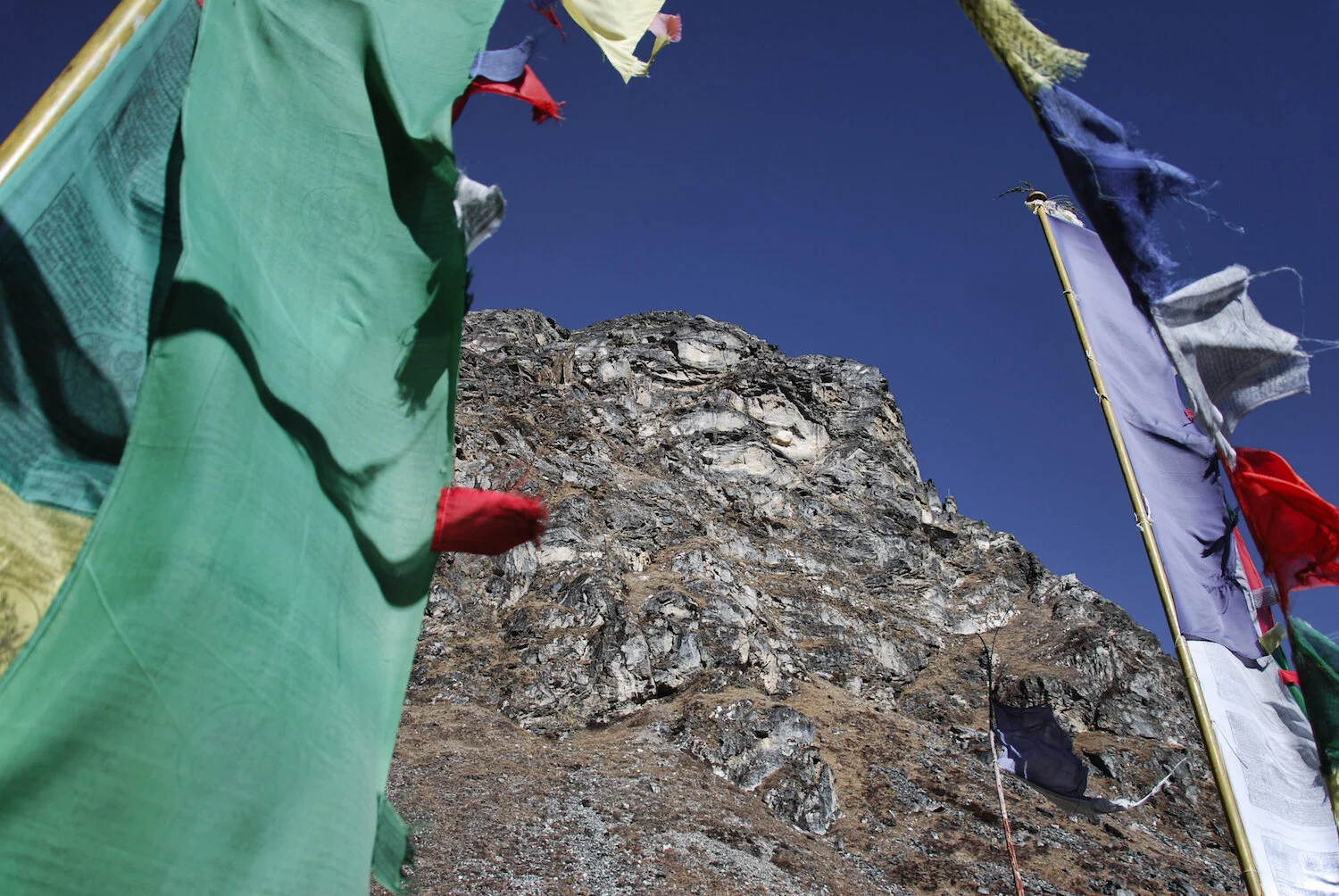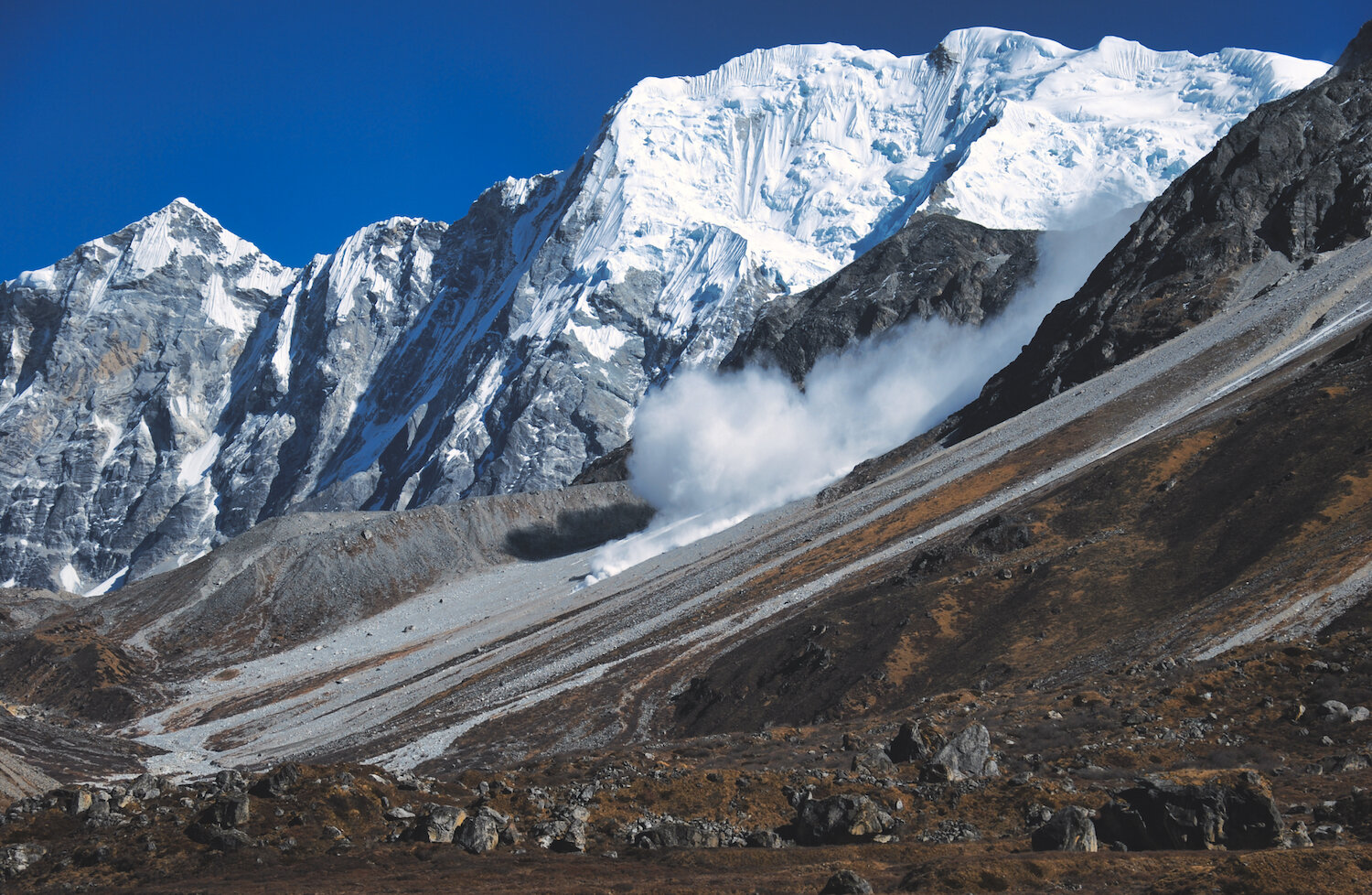98 - Helambu-Gosainkund-Langtang (Langtang National Park, Nepal)
AFTER THE GADHIMAI FESTIVAL, I bid farewell to my British comrades and resumed my Himalayan exploration with a solo journey into Langtang National Park. Solo, you ask? Though not without risk, an unaccompanied expedition isn’t as crazy as it sounds. The trails are well-marked and teahouse accommodation obviates the need for carrying a tent or any surplus food beyond snacks. Suggested routes and itineraries are detailed in Lonely Planet: Trekking in the Nepal Himalaya. With one or two chums, the risk is minimal. I had no chums… sniffle.
Ideally, I would’ve recruited folks to join my open-schedule fandango, but this wasn’t a realistic goal. Few travelers arrive in Nepal with no specific plan and a shitload of disposable free time. Even if I were lucky enough to find someone in my unique position that wasn’t a lunatic, our objectives would’ve had to align. Most visitors book all-inclusive tours from home and follow the script once they arrive. This was the insurmountable drawback to organized trekking outfits. Set schedule. Set itinerary. No “shits and giggles” deviations. I need my shits and giggles. If Day 4 involved a leisurely four-hour hike from one village to another, that was it. Case closed. No time for bonus explorations or adventure tangents.
How do I know? Because I spent more time than I like to admit researching options and giving anyone who’d listen the opportunity to meet my minimal requirements. I wanted a local guide in decent shape with above-average motivation, and I wanted control of the itinerary. No cookie-cutter program. No set schedule. I’d had enough of that shit. My foray into Mustang was an incredible experience but had I been able to push past the arbitrary logistical constraints, I could’ve packed in a few extra hikes and a possible snow leopard hunt (as in camera safari) for good measure. My guide on that journey was a decent fella, but he had zero desire to be hiking in Upper Mustang, a gig he took on last minute to accommodate a German couple’s ultimatum they have their own guide.
From a safety standpoint, a local with regional knowledge was more than welcome, but nobody would bite. The standard Langtang itinerary required a sixteen-day trek, including travel time to the trailhead. When all was said and done, I did it in eleven, which included rest days and extra nights in intriguing locales. Not only did I see and experience way more than I otherwise would have, it was cheaper to boot. Frugal and intrepid? That’s a winning combination.
I began in the “wrong” direction. Instead of a nine-hour bus ride to Syabrubesi, I chose the traditional endpoint as my start point. Ants in my pants. That’s my excuse. Who wants to kick off an epic Himalayan trek exhausted from a road trip? Not me. So, I hopped a bus to Sundarijal, a veritable hop, skip, and a jump from Kathmandu. This approach has a huge drawback. The climb from Tharepati to Gosainkund involves a single-day ascent greater than 1000 m (3300 ft). Let’s just say that’s ill-advised and can lead to acute mountain sickness (AMS). Pulmonary edema? Bad. Cerebral edema? Bad. Nobody wants either.
A calculated risk I was willing to take. I’d been at altitude before and knew the telltale signs along the road to AMS (fatigue, lethargy, headache, etc.). If trouble manifested, I’d slow down, turn around, and spend another day or two acclimatizing. I was also hedging my bets with Diamox, some altitude insurance if you will. Pharmaceuticals and a quick descent comprised my contingency plan. This was a solid strategy, but I can’t deny going solo added a risk factor that should’ve steered me the other way. Still, I felt good. I felt confident. In hindsight…
I’d visited Sundarijal soon after arriving in country as part of a modest warm-up to regain my “mountain legs,” so to speak. The bucolic Himalayan foothills make a pleasant appetizer for the hike to come. Days one and two were uneventful. (Sundarijal to Golpu Bhanjyang to Tharepati). I did encounter two women discouraging monkey interlopers by hurling rocks into the forest, and I had another go at yak butter tea (second time’s the charm), but beyond that, it was a pleasant stroll with a Himalayan backdrop for company. Though there were villages, and I did pass other travelers, I saw far less of either than expected. The solitude was a feature, not a bug, but made my solo status more precarious.
Day 3 was the crucible. Therapati to Gosainkund. Arduous and lonely in the best possible way. I saw no one, no one saw me. Given the circumstances, I thought it wise to keep a steady pace, so I put my head down and got to work. I used the micro-break strategy (no more than 15 minutes at a time) and fueled my odyssey with granola and candy bars. I had a purpose. I had a goal. Get to Gosainkund as fast as possible without blowing a rod with just enough hesitation to soak up the atmosphere.
Magnificence multiplied with elevation. The trees disappeared, revealing a rocky, shrub-strewn expanse spotted with snow and ice. By the time I reached Laurebina La Pass (4610 m, 15213 ft), I was e2—exhausted and exhilarated. The wind bit my face, the moonscape watered my eyes. I was cold, tired, and dreaming of lemon tea and dal bhat. And yet, I lingered. No more ascent. Thank ya, Jee-sus. The Gosainkund region is known for its frozen lakes and desolate allure. It does not disappoint. The short time I stood on the pass made it impossible to regret my foolhardy decision to go it alone. The wind didn’t howl or moan, it merely threshed and whooshed inside my ear canals. Was I being haunted? Definitely, though by what or who I cannot say. I think Edward Abbey would’ve understood my emotion. I’d like to think, at that moment, I understood his borderline morbid fascination with the desert a la Desert Solitaire. If only I had his gift of description. Would dying alone in such forlorn grandeur be a tragedy or a triumph?
I reached my teahouse Shangri-La seven and a half hours after leaving Therapati. The “village” is nothing more than a few teahouses established for trekkers alongside a lake. Gosainkund lakes are sacred to Hindus and Buddhists. The August full moon brings 20,000 Hindu pilgrims who come to bathe for the festival of Janai Purnima. And the rock cairns lining the shores are a testament to Buddhist reverence.
Haunted? More like possessed, I should think. Though this leg of my hike was strenuous, to say the least, the altitude didn’t blunt my enthusiasm or progress how I’d anticipated (headache, rapid pulse, shortness of breath, general malaise, etc.). I’ve had experiences above 15,000 ft that kicked my unholy ass, but those ghosts saw fit to leave me be. I felt good. I wanted more.
Multiple guides I met in Tharepati and Gosainkund spoke of a nearby peak with amazing views of the surrounding area. They suggested I check it out. Suriya Peak piqued my interest (pun intended) if for no other reason than it wasn’t mentioned in the guidebook. We all know if it ain’t in the book, it doesn’t exist. How could I resist? According to locals, the trail was easy to follow, marked by stone cairns. I was instructed to go back from whence I’d come and hang a left. The map confirmed this. I was as giddy as a toddler with a new box of crayons.
The smart play would’ve been following a group headed out in the morning and have their Nepali guide point me in the right direction. I concluded it’d be difficult to miss a 5,145 m (16,978 ft) peak, so I slept in. Dumb. My contacts made it sound like a leisurely six or seven-hour trot upward. Nuh-uh. Nor was the path “clearly” marked. Before deviating off the main trail, I engaged a couple of female hikers that passed as I snapped a few photos. They were headed the “right” way down into the valley. I told them my name was Richard from America just in case they heard news of a missing dipshit hiker. Melodramatic? Perhaps. They were French. They were cute. So, I thought spraying testosterone around would suffice as my final romantic gesture before vanishing.
Although I did eventually find the stone piles (cairns) marking the “trail,” the closer I got to the summit, the more difficult it was to spot the markers. Imagine looking for a small pile of stones amid a big pile of stones. I, of course, lost the actual path, climbing a much steeper route. I deserved little sympathy as it was pretty clear in hindsight the idea is to ascend to a nearby ridge to the west, then follow a more gentle incline to the top. Ignorant.
I won’t lie, it was dodgy. Unstable tire-sized rocks, loose scree, and a precipitous climb made for a stressful morning. I had a pair of trekking poles inherited from a departing tourist in Kathmandu that proved invaluable and likely prevented catastrophe. I remained unscathed. The poles did not. Though serviceable, they were now misshapen and unadjustable. Fooey.
Again, I considered the consequences of solitude. Again, I chastised myself for youthful indiscretion. All this self-flagellation led to a simple question: Had I known what was in store, what would I have done differently? Answer: Not a fucking thing. End neurotic preoccupation with hindsight. Game on.
The summit view was worth the risk and all the cognitive nagging enclosed therein. I lingered on the peak for over an hour and had what I equate to an existential orgasm. Everything felt right. I was where I was supposed to be when I supposed to be there with the person I was supposed to be with… supposedly. I wasn’t the only asshole on Earth, but I could’ve been. And for a few brief moments, I was okay with that. I communed. I meditated. I dreamed of sprouting wings and buzzing adjacent peaks. You know you’re in the Himalaya when summiting a near 17,000 ft mountain is a causal undertaking, a paltry hill surrounded by “real” mountains.
And back to reality, a descent no less harrowing. I’d say it was even more challenging considering my fatigued legs. It was then, on the way down, I spotted trail markers (cairns) along a gentler ridge, though too late to benefit my legs as it were. Six and a half hours later, I returned to Gosainkund for a breather and gallons of hot chocolate and lemon tea, followed by an afternoon constitutional lakeside.
Gosainkund to Thulo Syabru entailed a healthy descent into the valley below. Rhododendron forests, more spectacular scenery, and delicious solitude. I’m not sure what people mean when they speak of spiritual journeys, but I was starting to get the picture. Savor the moments as they unfold, I told myself. And I listened. If only I could keep listening.
This was Red Panda country, and though I’d hoped to glimpse the elusive little bastards, it wasn’t to be. Just me and a seemingly empty forest. The towering trees and subdued tone was something out of a Grimm fairy tale. I almost felt like tiptoeing to avoid detection.
My right knee began a modest revolt, especially on the declines. Would it hold for another four or five days? I was about to find out. I arrived in Thulo Syabru well before 2:00 p.m., giving me ample time to recuperate. What’s a little rest and relaxation without suitable company? I shared the dining room with a rather fetching young lass from Israel with red hair and a mesmerizing stare. We hit it off, sharing a hearty meal and stimulating conversation around the stove. Galit was easy to talk to, and I found myself getting personal in a hurry. We needed time for that flower to blossom, but our roads diverged… sigh.
Oh, the vicissitudes of travel! In a single evening, I confronted reasons for and against a peripatetic lifestyle. Had it not been for my trip, I wouldn’t have met her, but because of our separate journeys, no further exploration was possible. The travelers Catch-22. She mentioned something about not having a warm sleeping bag. Hint, hint? Yes, yes. Did I take the hint? No, no, I didn’t. I’m dumb. Very, very dumb. In my defense, she was a young female traveling alone (not counting her guide), and I was always wary about making unattached females uncomfortable. Prudence required she make the first move. Problem is, she did. I missed the signal. How do I know? We corresponded via e-mail afterward. I mentioned my attraction and how I came close to offering a spot under my bag. It was then she confessed she stood outside my door in the middle of the night conflicted on whether to knock and request shelter. Sadly, she relented… sigh. I had an open invitation to stay with her should I visit Israel, and though the Levant was on my hit list, I never made it… sigh. It’s only the things we don’t do…
I proceeded east into Langtang Valley, stopping for a night at Lama Hotel (oddly, this is the name of the village, not a particular teahouse), before settling in Kyanjin Gompa for three nights. My knee held, but not without a persistent grumble. Tramadol and an anti-inflammatory assisted my plight. Kyanjin Gompa refers to the monastery nestled in this small mountain enclave and also to a collection of guesthouses. As it was the slow season, I went with the Yala Peak Guesthouse, one of the few open year-round. The food was excellent and the setting cozy in the extreme, which explains my reluctance to leave. This was the “shits and giggles” portion of the trip. I spent days exploring the area.
The day after I arrived, I went for a stroll in Lirung Valley behind the monastery. Alone again. Off-track, off-script, and skirting tropospheric boundaries. I felt close enough to Langtang Lirung and Kimshung peaks to reach out and dry hump them. Objects in the upper atmosphere appear closer than they are. This goes double for the Kimshung Glacier whose internal rumblings were letting me know its stalwart facade belied a turbulent interior.
After eight days of strenuous hiking, the strain caught up, physically and mentally. I just didn’t have the “get up and go” on Kyanjin Gompa: Day One. So, I took it slow, marveling at the overload of Himalayan magnificence. I stood. I watched. I listened. Was a snow leopard watching me? A yeti, perhaps? Ya just never fucking know.
Remarkably, the knee rebounded. (Guess I just needed to pound it into submission). I had considered packing it in and heading down after my dalliance behind the gompa, but it was doing so well, I ventured farther up the valley to an area known as Langshisha Kharka. Beyond Kyanjin, there are no facilities, only a stone hut here and there for those tending yak herds. I had company, a Canadian gentleman and his guide. Some chitty chat with a fellow traveler was a welcome break from the isolation.
My companion headed back after lunch, I trudged on. The name “Langtang” comes from the Tibetan words lang for “yak” and tang for “to follow.” Legend has it a lama (Buddhist holy man) discovered the valley after chasing his runaway yak into Langshisha. As if on cue, I noticed a solitary yak basking in the sun. Coincidence? It turns out this was a fellow renegade. On my return, I encountered two locals searching for the fugitive.
Once again, I was presented with a breathtaking scene of postcard perfection. And, as always, I fell victim to the natural awe indicative of a Himalayan visit. I suppose my descriptions are becoming a bit trite. What can I do? It really is that amazing. While pausing a few moments to appreciate, the universe treated me to a small avalanche sideshow. A private viewing for a party of one. Namaste, bitches.
The next day I began the journey back toward Kathmandu, which included an eight-hour mini-marathon from Kyanjin Gompa to Syabrubesi. There was no need to rush, but this leg was the least interesting of the trek, so I pushed ahead full steam, arriving in Syabrubesi around 3:00 p.m. A public bus left for Kat at 7:00 a.m. the next morning. The ride was an exercise in refined chaos—crowded, smelly (wet dog to be precise), bumpy, and loud. Folks were constantly embarking and disembarking while uploading and downloading jugs of water, huge sacks of whatever, goats, etc. Livestock and school children had reserved seating on the roof.
Poor suspension and handling, dismal road quality, and the possibility of driver error added an element of festering unease as the bus skirted sheer roadside cliffs. We chugged. We creaked. We rounded those corners. I did my best to shun worse case scenarios. Valium to the rescue. Back to Kathmandu.






















